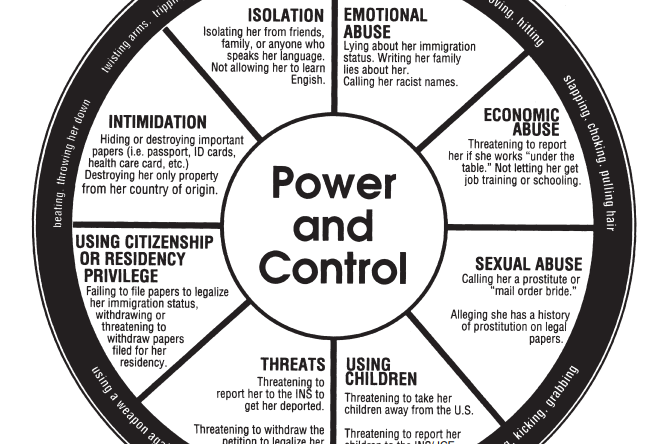The first step to supporting adult and survivors of Domestic Abuse is to recognise the signs and ask about it. You may notice physical signs like unexplained bruises or injuries, but often Domestic Abuse doesn’t leave visible scars or wounds. Learning more about coercive control and the range of tactics people causing harm use to enforce control can help you to notice and be worried about what someone is saying about their relationships with their partner or family. You may notice changes in their routines, behaviour, they may not seem like themselves or be struggling to cope. The signs of Domestic Abuse are similar to signs of other types of abuse, trauma and neglect so it is helpful to ask curious questions and explore things further.
When a victim/survivor is considering talking about Domestic Abuse, accessing support or leaving this can increase the risk of harm to both adult and child survivors. Safe enquiry is one which does not alert the person causing harm to our enquiry and we are able to put in place safety measures to address the ‘consequences’ to this for adult and child survivors from the person causing harm.


Safety
• Are they alone and in a private space? This is particularly the case when supporting someone over the phone.
• Ask closed questions (yes/no) to establish this:
o Are you alone?
o Is it safe to ask you some questions about your relationship with…?
o Is it OK for us to continue this call right now? (for telephone conversations)
• If someone other than the victim/survivor answers the phone, ask to speak to them and then establish that it is safe to proceed again using the above questions.
• If not, suggest another time to call back using a closed question, e.g. I need to call back another time, is tomorrow morning at 10am OK?
• If it is safe to talk, establish a code word or phrase which they can say which lets you know it is no longer safe to talk and end the call e.g. ‘no I’m not interested thank you’. If they use this, end the call and call back later or used your established safe method of contact.
• Establish a safe method of contact to continue the conversation if it ends unexpectedly or run out of time. This is important both for you to follow up and for referral to other support which we will talk about in the ‘Refer’ section of this toolkit. This could be having a face-to-face meeting in a private space. Consider what other practitioners/services might be able to support with this e.g. school, GP, pharmacy.
• If the victim/survivor requires an interpreter – use one. Never use the person causing harm or children as an interpreter. Avoid using other family or community members as interpreters as they may also be abusing the survivor or complicit in the abuse. This reduces the risk of information getting back to the person causing harm and is important for accurate interpreting and creating the safest environment for the victim/survivor to be able to disclose.
‘One Chance Rule’
• This might be our only opportunity to have the conversation, especially if we are worried about so called ‘honour’ based abuse or forced marriage (harmful practices).
• Practitioners should ask and respond to concerns about domestic abuse and harmful practices at the first safe opportunity and offer support.

Ways to Ask
It is helpful to frame the conversation by explaining your agency’s confidentiality policy and the limitations of confidentiality, e.g. for safeguarding and supervision purposes.
This conversation is confidential, but I may need to share what we have talked about with my manager or other services that can help you so I can support you and/or your children to be safe.
Initial Questions:
• Do you get the support you need from your partner/family members?
• How do you and your partner/ex-partner/family work out arguments / conflict / disagreements?
• Do arguments ever result in you feeling put down or bad about yourself?
• Do you ever become frightened by what your partner or family says or does?
• Do arguments ever result in hitting, kicking or pushing?
• Are you having any problems with your partner/ex-partner/family member?
If you have noticed and are worried about something they have said or a change in how they act or think they are not coping well:
• I’m worried about you because…
• I was thinking about what you said yesterday and…
• I’m imagining that….. you feel a bit worried about talking to me or that you might feel…
• I wonder if what you are telling me means…
• I wonder if what you are trying to say is…….
• Often when people that I work with say…. Or act like….. they are experiencing abuse. Is that happening to you?
Consider the language that you use- What has happened to you? not What have you done?
Normalising, Minimising and Self-blame:
The victim/survivor may struggle to identify and name their experience as abuse, especially if there isn’t physical violence. They may ‘normalise’ the abuse as this is how things were growing up with their family or in previous relationships. Often people ‘minimise’ what is happening to them or blame themselves for the abuse as they have internalised the psychological and emotional abusive messaging and excuses from the person causing harm e.g. I do this because you …… I didn’t do this… It’s all in your head… You are making it up….
They may think it’s not that bad because previous relationships or abuse from family was worse or to help cope with the abuse.

Exploring and uncovering tactics of coercive control
Often the ‘relationship rules’ and/or tactics used to enforce control are hidden and subtle, or survivors have changed their routines and behaviour due to chronic fear rather than overt threats or violence.
Ask:
What would happen if you did/didn’t do……?
Consider:
•Is this a pattern of behaviour?
•Is this pattern making someone change their daily routines or activities?
•Is this pattern making someone afraid or fearful?

